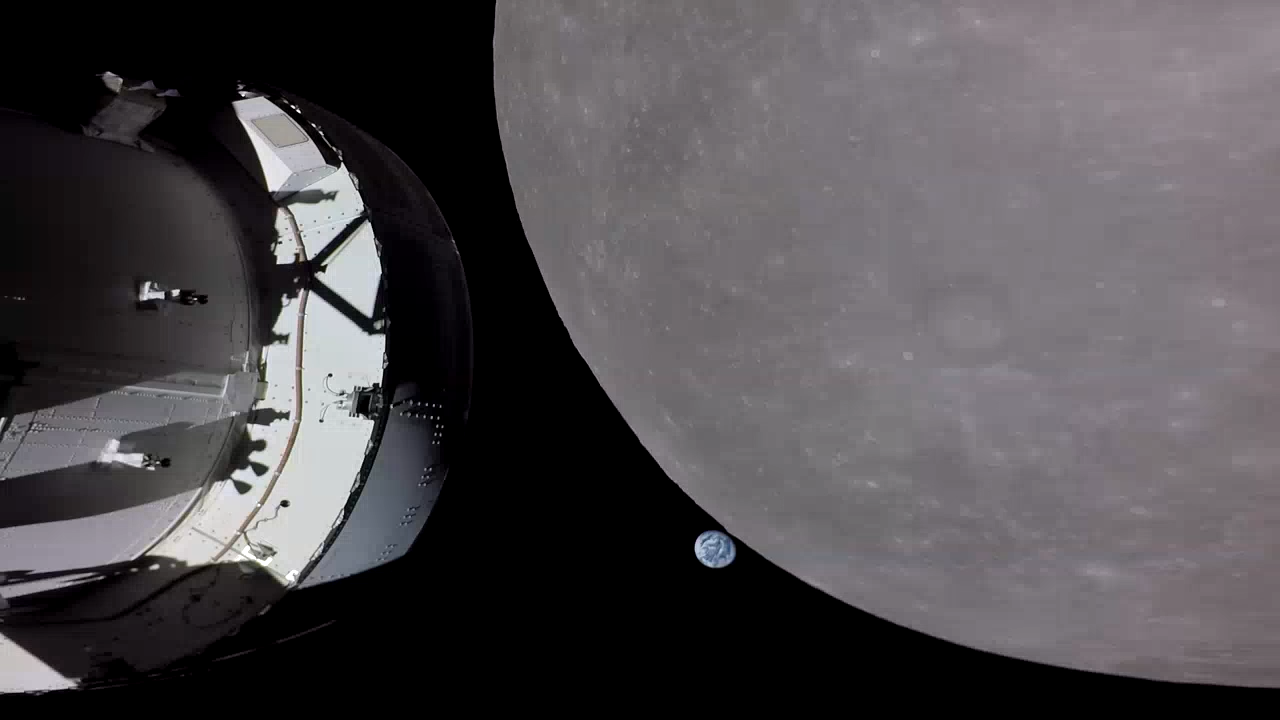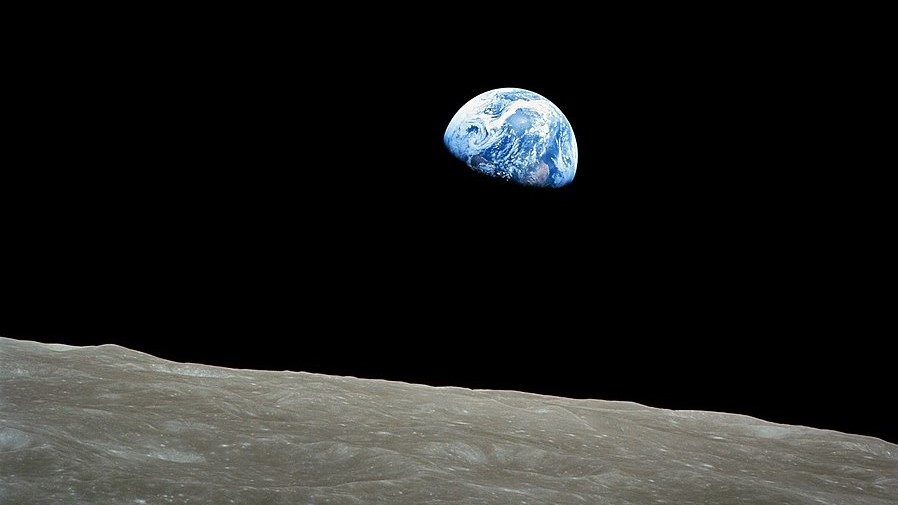Beautiful 'Earthset' photo taken during Artemis mission a nod to Apollo 'Earthrise' image
The Orion capsule has taken a photograph of Earth passing behind the moon as the spacecraft passes within 81 miles of the lunar surface.

A tiny, distant Earth starts to slide behind the moon in an eerie new photo snapped by the Orion spacecraft, which was recently launched into space as part of NASA's Artemis I mission. The image, titled "Earthset," is the reversal of the famous "Earthrise" shot captured by NASA's Apollo 8 mission more than 50 years ago.
Artemis I's "mega moon rocket" was finally launched into space in the early hours of Nov. 16 after more than a month of failed launches. Once in space, the rocket released the unmanned Orion capsule, which continued onwards toward Earth's natural satellite.
The new image was taken Nov. 21, shortly after the Orion capsule slingshotted within 81 miles (130 kilometers) of the lunar surface as it moved to position itself in lunar orbit. The photo was released shortly afterward on NASA's Twitter page.
The Orion spacecraft will travel away from the moon until it enters a retrograde orbit — a distant orbit where a small object rotates around a small body (i.e. the moon) while also being held in place by the gravity of a larger body (i.e. Earth) — at a distance of around 57,200 miles (92,000 km) from the moon on Nov. 28. Once in orbit, the unmanned capsule will break a record set by Apollo 13 for reaching the furthest distance from Earth by a spacecraft designed to carry human passengers — around 270,000 miles (430,000 km) away from our planet.
Related: Why did NASA's Artemis 1 rocket launch keep getting delayed?
The name "Earthset" is a nod to the famous "Earthrise" image, where a partially illuminated Earth hangs in space briefly after rising above the lunar horizon. "Earthrise" was captured by NASA astronaut William Anders on Dec. 24, 1968 during the Apollo 8 mission, which was the first crewed voyage to orbit the moon.

The Orion spacecraft has since taken its own video of an Earthrise, captured on Nov. 22, which shows our planet emerging from seemingly nowhere as it glides out from behind the shadow-covered moon.
Sign up for the Live Science daily newsletter now
Get the world’s most fascinating discoveries delivered straight to your inbox.
Once the Orion spacecraft has entered its distant retrograde orbit, it will remain circling the moon for around 10 days before eventually being slingshotted back to Earth, where it is due to touch back down on Dec.11 after traveling more than 1.3 million miles (2.1 million km).
The next Artemis mission, Artemis II, which is scheduled to launch in 2024, will repeat the same flightpath as Artemis I with astronauts inside the Orion spacecraft. The following mission, Artemis III, which is scheduled to launch in 2025, will attempt to land astronauts on the moon for the first time since 1972.

Harry is a U.K.-based senior staff writer at Live Science. He studied marine biology at the University of Exeter before training to become a journalist. He covers a wide range of topics including space exploration, planetary science, space weather, climate change, animal behavior and paleontology. His recent work on the solar maximum won "best space submission" at the 2024 Aerospace Media Awards and was shortlisted in the "top scoop" category at the NCTJ Awards for Excellence in 2023. He also writes Live Science's weekly Earth from space series.









